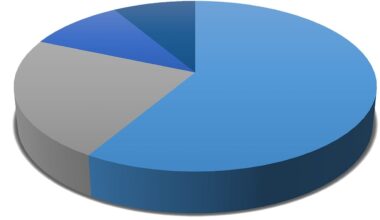Pricing Analytics for Subscription-Based Models
Pricing analytics in subscription-based models has become increasingly vital for businesses aiming to optimize revenue and customer retention. With a growing number of companies adopting subscription services, understanding how to set prices effectively can lead to significant business success. Businesses now use data-driven strategies to analyze customer behavior and willingness to pay, ultimately helping in determining the best pricing structures. Several methods underpin these analytics, such as customer segmentation, churn analysis, and competitor pricing analysis. These tools provide valuable insights into the factors influencing pricing decisions. For instance, customer segmentation allows businesses to tailor pricing based on different consumer needs. Advanced analytics also help assess the effectiveness of promotional pricing or discounts. Subscription models vary significantly; therefore, utilizing the right pricing strategy can significantly enhance profitability. Furthermore, it’s crucial to monitor and adjust pricing strategies over time according to market trends. Engaging in regular price testing and gathering customer feedback can inform these adjustments. Implementing a systematic approach towards pricing can ensure that subscription-based companies remain competitive in a crowded marketplace.
Importance of Data in Pricing Decisions
Data plays a pivotal role in making informed pricing decisions within a subscription-based model. To effectively gauge where to set prices, businesses must rely on analytic insights derived from customer data. By evaluating historical purchasing behaviors and preferences, organizations can uncover patterns that reveal how customers respond to pricing changes and promotional offers. Key metrics such as customer lifetime value (CLV) and cost of acquisition provide a foundational understanding of profitability. Moreover, analyzing competitive pricing data helps businesses position their subscriptions attractively relative to the market. Investing in robust data analytics tools can yield real-time insights that allow for more strategic pricing models. Additionally, customer feedback is invaluable for understanding perceived value; tools like surveys or focus groups can reveal insights into consumer expectations. Recognizing the psychological factors that affect pricing optimization, such as framing effects and loss aversion, further enhances decision-making. Effectively leveraging data leads to agile adjustments that can maximize revenue while ensuring customer satisfaction remains high. Therefore, embedding data analytics into pricing strategy becomes an indispensable aspect of modern business practices, especially for subscription services.
Pricing strategies for subscription models often involve a balance between affordability and maximizing profit margins. Companies should consider different pricing approaches such as tiered pricing, freemium models, or usage-based pricing to cater to a diverse range of customers. Tiered pricing enables users to choose from several subscription levels based on their needs, ensuring a larger audience can be served. Freemium models allow potential customers to try the product without initial commitments, attracting a wider user base. It’s essential to analyze how different subscriber segments perceive value in these various structures. For example, some customers may seek extensive features and are willing to pay more, while others may prefer minimal functionalities at lower prices. Utilizing data analytics helps businesses continually assess performance across subscription tiers. Analyzing renewal rates, customer acquisition costs, and billing cycles can provide insights into the effectiveness of the chosen pricing model. Furthermore, experimenting with pricing or making adjustments based on customer feedback helps maintain competitiveness. Regular financial reviews are essential for refining these strategies to keep pace with market changes. An adaptable pricing strategy can enhance overall business performance.
Churn Rate and Its Impact
Churn rate directly affects the sustainability of subscription-based businesses, making pricing analytics crucial. The churn rate represents the percentage of customers who discontinue their subscriptions over a set period. High churn can result from dissatisfaction with pricing, lack of perceived value, or better competitor offers. Businesses must analyze churn data to understand the reasons behind customer discontinuation. Utilizing pricing analytics to identify optimal pricing can help reduce churn significantly. For instance, by adjusting subscription prices based on customer feedback and preferences, companies can enhance perceived value. Customer retention strategies should also incorporate analytical insights regarding the lifetime value of subscribers. Offering incentives for long-term commitments or discounts can be effective in mitigating churn. Regular assessments of customer satisfaction through surveys or usage data provide early indications of potential churn risk. Additionally, businesses should evaluate industry benchmarks to gauge their churn rates against competitors. By focusing on customer engagement and recognizing the factors leading to churn, companies can create targeted strategies to retain customers, ultimately stabilizing revenue streams.
Promotion strategies also play a significant role in pricing analytics, especially in subscription-based models. Effective promotional strategies can attract new customers and reduce attrition. Companies may utilize discounts, trials, and special offers to entice potential subscribers. These promotions should be thoroughly evaluated to ensure they enhance profitability while maintaining customer satisfaction. Analytics allows businesses to track the success rate of promotions in real-time, assessing metrics such as conversion rates and customer acquisition costs. Furthermore, A/B testing different promotional offers can yield insights into what resonates with customers the most. Adjusting promotions based on data gathered can help refine marketing strategies. Retargeting past customers with tailored offers based on previous usage data can enhance reactivation rates. Companies must be cautious, as excessive promotion can devalue the brand over time. It is essential to balance short-term promotional gains with long-term brand integrity. By integrating promotions with data-driven pricing strategies, businesses can achieve optimal results, ensuring both customer growth and profitability are realized.
Future Trends in Pricing Analytics
As subscription-based businesses continue to evolve, pricing analytics will experience significant advancements. Machine learning and artificial intelligence are transforming how data is analyzed and leveraged in pricing strategies. These technologies can provide deep insights into customer behavior, preferences, and price sensitivity that were previously inaccessible. Predictive analytics will help forecast future buying patterns based on emerging trends. Subscription businesses will increasingly adopt dynamic pricing strategies enabled by real-time analytics, allowing rapid adjustments to pricing based on market conditions and customer responses. Personalization will play a crucial role, as algorithms help create individualized pricing structures tailored to specific consumer segments. Additionally, ethical pricing will become more prominent, with a focus on transparency and fairness. As consumers become more discerning, businesses may leverage pricing transparency to build trust and loyalty. Furthermore, integrating qualitative data, such as customer sentiment analysis from social media, can enhance understanding and pricing strategies. To remain competitive, businesses must stay ahead of these advancements, continually refining their pricing models based on comprehensive data analysis, thus ensuring their relevance in a fast-paced market.
In conclusion, adopting pricing analytics within subscription-based models is essential for optimizing revenue and customer satisfaction. Companies that leverage data effectively will enjoy a competitive edge. From comprehensively assessing the factors influencing pricing decisions to integrating dynamic strategies and forecasting future trends, the role of accurate analytics cannot be overstated. Furthermore, businesses must remain agile, capable of adjusting pricing strategies swiftly in response to shifts in customer behavior and market dynamics. Regular analysis of customer segmentation, churn rates, and promotional impacts will guide effective decision-making. Moreover, using advanced tools and technologies for detailed insights is crucial for informed strategies. As competition intensifies in subscription markets, understanding consumer psychology will add new dimensions to pricing strategies. Ultimately, ongoing innovation in pricing analytics will enable businesses to navigate complexities while achieving sustainable growth. By prioritizing customer needs and preferences, coupled with data-driven insights, companies can build long-lasting relationships, ensuring not just profitability but also customer loyalty, contributing to long-term success in subscription-based environments.
Conclusion
In conclusion, adopting pricing analytics within subscription-based models is essential for optimizing revenue and customer satisfaction. Companies that leverage data effectively will enjoy a competitive edge. From comprehensively assessing the factors influencing pricing decisions to integrating dynamic strategies and forecasting future trends, the role of accurate analytics cannot be overstated. Furthermore, businesses must remain agile, capable of adjusting pricing strategies swiftly in response to shifts in customer behavior and market dynamics. Regular analysis of customer segmentation, churn rates, and promotional impacts will guide effective decision-making. Moreover, using advanced tools and technologies for detailed insights is crucial for informed strategies. As competition intensifies in subscription markets, understanding consumer psychology will add new dimensions to pricing strategies. Ultimately, ongoing innovation in pricing analytics will enable businesses to navigate complexities while achieving sustainable growth. By prioritizing customer needs and preferences, coupled with data-driven insights, companies can build long-lasting relationships, ensuring not just profitability but also customer loyalty, contributing to long-term success in subscription-based environments.


